Main article: President of the Argentine Nation
See also: Annex: Presidents of the Argentine Nation

Flag or presidential banner of Argentina.
This article lists the rulers of Argentina, including those who held office in relation to part of its current territory, since the creation of the Viceroyalty of the Río de la Plata in 1776 and the Buenos Aires governors who managed the foreign relations of other provinces until the formation of the Argentine National State, in the mid-19th century.
Throughout history, the highest authorities have changed titles and powers: viceroys, presidents of government boards, triumvirs, supreme directors, governors of Buenos Aires in charge of the national executive power and presidents of the Nation.
Viceroyalty of the Río de la Plata (1777-1814)

Diachronic map showing the areas of America that were part of the Spanish Empire. The peoples of the territories that were not effectively occupied did not form part of the colonial system. For details see map.
The Spanish Empire in its territorial hub around 1790 Regions of influence (explored and/or claimed but never controlled) or territories in dispute or of short control Positions of the Portuguese Empire ruled by Spain between 1580-1640 by dynastic annexation, 1580–1640. Lost territories in or after 1717 for the Peace of Utrecht.
Audiencias del Virreinato del Perú en 1650.

The virreinate of the Rio de la Plata in 1783.
From 1536 to 1810, the territory currently occupied by Argentina belonged to the Spanish Empire in America, so the supreme authority was the king.
The Spanish Empire reached 20 million square kilometers by the end of the 18th century, although its greatest expansion occurred between the years 1580 and 1640, during the reigns of Felipe II, Felipe III and Felipe IV, the period in which the dynastic union with Portugal took place. During the 16th and 17th centuries, an own territorial structure functioned, « viceregal" and not colonial. This system, very different from that of other European empires, based on the consideration of overseas territories as extensions of the metropolis, and therefore equal in rights to those of the Iberian Peninsula, worked until 1768. Until the last period of the Empire, in the xix century, it did not acquire a purely colonial structure.
The Spanish Crown had effective control over only part of the territory, and the rest was dominated by different indigenous peoples. Initially, the area that currently belongs to Argentina was under the jurisdiction of various captaincies, then it became dependent on the Viceroyalty of Peru and from 1776 until the May Revolution, in 1810, it was part of the Viceroyalty of Río de la Plata.
Viceroys of the Río de la Plata (1777-1810)
On August 1, 1776, under Carlos III of Spain, the Viceroyalty of Río de la Plata emerged, separated from the Viceroyalty of Peru ―which had been created in 1542― all the territories currently owned by Argentina, Bolivia, Paraguay, Uruguay and some territories that today are in the jurisdiction of Chile and Brazil.
| Image
| Virrey del Río de la Plata
| Start of government
| End of government
| Government work
|
|---|
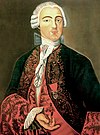 | Pedro Antonio de Cevallos Cortés y Calderón
(1715-1778) | 15 October 1777
| 12 June 1778
| Designated by King Charles III. His most important work was the successful expedition to the Colonia del Sacramento that expelled the Portuguese. He also sanctioned the Free Trade Act of 1778, which favored the development of Buenos Aires by declaring it official and legal port (condition that previously had only two ports in Panama and Peru).
|
 | Juan José de Vértiz y Salcedo
(1719-1799) | 12 June 1778
| 7 March 1784
| Designed to replace Cevallos (after the death of this) by King Charles III. It developed the regional economy, established the Royal Order of Intendence and founded the Royal Audience of Buenos Aires. He carried out the first census, which revealed 37,000 porters.
|
 | Nicolás Francisco Cristóbal del Campo, Marquis de Loreto
(1723-1803) | 7 March 1784
| 4 December 1789
| Designated by King Charles IV after the resignation of his predecessor. He strengthened the Royal Audience of Buenos Aires.
|
 | Nicolás Antonio de Arredondo
(1740-1802) | 4 December 1789
| 16 March 1795
| Designated by King Charles IV. He ran the Buenos Aires sandwich and fortified the city of Montevideo. He had neighbourhood councils to maintain morality and combat crime. He supported the stables and protected the cattle industry. In 1794 he installed the Consulate Real in Buenos Aires, which operated as a commercial court.
|
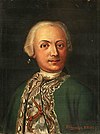 | Pedro de Melo de Portugal y Vilhena
(1733-1797) | 16 March 1795
| 15 April 1797
| Designated by King Charles IV. He continued with the reforming policy of his predecessors and defended the virreinal capital and Montevideo from the advances of Portugal and Great Britain in the area. He died without notice.
|
 | Real Audiencia de Buenos Aires
| 15 April 1797
| 2 May 1797
| He worked internly for a short time. In the absence of a replacement in the colonies, the Royal Audience had the responsibility of waiting for the arrival of the same maintaining the order.
|
 | Antonio Olaguer Feliú and Heredia
(1742-1813) | 2 May 1797
| 14 March 1799
| He faced the British and Portuguese advances in the area. It authorized the entry of foreign and neutral ships to the port of the city to stimulate the virreinal trade, affected by the unstable European situation.
|
 | Gabriel Miguel de Avilés and the Fierro
(1735-1810) | 14 March 1799
| 20 May 1801
| Designated by King Charles IV
|
 | Joaquín del Pino Sánchez de Rojas Romero y Negrete
(1729-1804) | 20 May 1801
| 11 April 1804
| Designated by King Charles IV, he died in office. He appointed Misiones governor to Santiago de Liniers who faced the Portuguese because of the usurped Eastern missionsBut Del Pino did not give him the necessary support and relieved him of his post in July 1802.
|
 | Rafael Núñez Castillo Angulo and Bullón Ramírez de Arellano, marquis de Sobremonte
(1745-1827) | 23 April 1804
| 10 February 1807
| Designated by King Charles IV. As a result of the rejection of the first English Invasion (1806), the Buenos Aires Open Cabildo decided that the vice-rey would hand over political power to the Royal Audience and military command to Liniers, a hero of the Buenos Aires reconquest, who was named in his replacement.
|
 | Santiago Antonio María de Liniers y Bremont, conde de Buenos Aires
(1753-1810) | 10 February 1807
| 30 June 1809
| Interim viceroy, confirmed by King Charles IV and later dismissed by the Central Board. French, he agreed to the power ratified by the Open Cabildo after his triumph in the First English Invasion. However, because of his nationality in the Napoleonic Wars he was removed from office.
|
 | Baltasar Hidalgo de Cisneros and La Torre
(1755-1829) | 30 June 1809
| 25 May 1810
| Designated by the Central Board, he was deposed by the May Revolution, during his government there were no works of great importance, due to the situation prevailing in the metropolis, however he avoided that the news came to Buenos Aires, although he finally arrived on May 17, 1810.
|
Captain General and Governor of the Río de la Plata provinces (1811-1814)
| Image
| General captain
| Start of government
| End of government
| Government work
|
|---|
 | Gaspar de Vigodet
(1747-1834) | 18 November 1811
| 23 June 1814
| He was appointed by the Regency Council as the highest authority of the Rio de la Plata viceroy with the charges Captain General and Governor of the Provinces of the Rio de la Plata and President of the Royal Audience of Buenos Airesbut without the title of “virrey”. He resisted a siege of several months in Montevideo until the city fell into the hands of the Buenos Aires government. Vigodet was then arrested and taken to Rio de Janeiro.
|
United Provinces of the Río de la Plata (1810-1831)
Since the May Revolution, in 1810, various short-term governments were established, made up mostly of the local population. Between 1810 and 1811 there were two boards, the First Board and the Big Board. Between 1811 and 1814 there were three Triumvirates, where three people shared power. In this period, the Assembly of the Year XIII, declared itself sovereign and established several of the institutions that anticipated independence, given that until now, it was governed in the name of the prisoner King Fernando VII of Spain. Between 1814 and 1820, the Directory governed, a one-person form of government. On July 9, 1816, the Independence of the United Provinces was declared. There were several directors.
Presidents of the Provisional Governing Boards (1810-1811)
| Image
| Chairman of the Board
| Start of government
| End of government
| Government work
|
|---|
 | Cornelio Saavedra
(1759-1829) | 25 May 1810
| 18 December 1810
| Chairman of the First Board. The Board ruled, nominally, on behalf of Fernando VII of Spain, then prisoner of Napoleon Bonaparte. It founded the Public Library, sent military expeditions to Paraguay and Peru, enabled new ports for trade, etc.
|
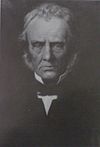 | Joaquín Campana (1773-1847)
| 18 December 1810
| 26 August 1811
| First President of the Big Board.
|
 | Domingo Matheu
(1766-1831) | 26 August 1811
| 23 September 1811
| Second President of the Big Board. The Board established several provincial boards to control the different jurisdictions, continued with the dispatch of troops to realistic territories. During the period, the port of Buenos Aires was blocked by Spain.
|
Triumvirates (1811-1814)
First Triumvirate
Main article: First triunvirate
| Image
| Triumvir
| Start of government
| End of government
| Government work
|
|---|
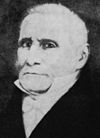 | Feliciano Antonio Chiclana
(1761-1826) | 23 September 1811
| 8 October 1812
| The Triumvirate maintained the policy of looking faithful to Fernando VII, although the war continued. In the North an invasion of absolutist forces was defeated in Tucumán by Belgrano, who had disobeyed orders that forced him to retreat to Cordoba.
In the Litoral, Portuguese forces advanced on the East Bank, in support of the realistics of Montevideo. The Triumvirate decided to negotiate an armistice on October 20, 1811. For him the site of Montevideo was ended; both the troops of Buenos Aires and the Portuguese would withdraw from the East Bank. Artigas rejected the agreement and moved with much of the eastern population to the Ayuí Camp, an episode known as the exodus of the eastern people.
Its work of government highlights the declaration of freedom of the press, the sanction of the Individual Security Act, the creation of the Appeals Chamber, the Rules of Institution and Administration of Justice, created the Immigration Commission (the first attempt to attract immigrants to the country) and challenged the Martial Law.
As you can see, on March 23, 1812, the triumvirus Juan José Paso was replaced by Juan Martín de Pueyrredón.
This First Triumvirate was deposed by a revolution created by the Logia Lautaro.
|
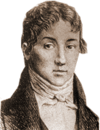 | Manuel de Sarratea
(1774-1849) | 23 September 1811
| 8 October 1812
|
 | Juan José Paso
(1758-1833) | 23 September 1811
| 23 March 1812
|
 | Juan Martín de Pueyrredón
(1776-1850) | 23 March 1812
| 8 October 1812
|
Second Triumvirate
Main article: Second triumvirate
| Image
| Triumvir
| Start of government
| End of government
| Government work
|
|---|
 | Juan José Paso
(1758-1833)
| 8 October 1812
| 31 January 1814
| During the government of the Second Triumvirate, the arrest and exile of Buenos Aires was ordered by Bernardino Rivadavia, the same happens with Juan Martín de Pueyrredón. On 4 December 1812, a commission was formed to draft the Constitution. The Faculty of Medicine was established and Cuyo Province was formed.
It was also called to the Assembly of the Year XIII (1813) which established the freedom of belly and slaves, officialized the national anthem and the national shield and a new form of government, the Board, which would enter into rigor a year later, among other things.
As can be seen, Antonio Álvarez Jonte was replaced by the future Supreme Director Gervasio Antonio de Posadas on August 19, 1813.
In January 1814, the Triumvirate succeeded in creating a single executive, called the Directory.
|
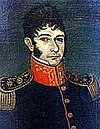 | Nicolás Rodríguez Peña
(1775-1853) | 8 October 1812
| 31 January 1814
|
 | Antonio Álvarez Jonte
(1784-1820) | 8 October 1812
| 19 August 1813
|
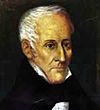 | Gervasio Antonio de Posadas
(1757-1833) | 19 August 1813
| 31 January 1814
|
Third Triumvirate (1815)
Main article: Third Triumvirate
The Third Triumvirate was given to an attempt to form a government in the United Provinces of the Río de la Plata in 1815. In the middle of the period of the Directory, it was not fully formed nor did it take any government measure, nor was it dissolved nor recognized outside of Buenos Aires. It is not usually counted among the Argentine governments.
| Image
| Triumvir
| Start of government
| End of government
| Government work
|
|---|
 | José de San Martín
(1778-1850) | 18 April 1815
| 20 April 1815
| Once the Directory was established, and after the resignation of Carlos María de Alvear, for 2 days he took power a Third Triumvirate, until the replacement of the Directory by José Rondeau on April 20, 1815.
They exercised power provisionally until the appointment of a new Supreme Director of the United Provinces of the Rio de la Plata.
Because of the government's fleetingness (only two days) no major reforms were implemented and the work of government was scarce, its only function being to avoid the acephaly of the executive branch.
|
 | Matías de Irigoyen
(1781-1839) | 18 April 1815
| 20 April 1815
|
 | Manuel de Sarratea
(1774-1849) | 18 April 1815
| 20 April 1815
|
Supreme Directors (1814-1820)
Main article: Supreme Director of the United Provinces of the Rio de la Plata
The so-called Assembly of the Year XIII ruled, at the end of 1813, the creation of a one-person position that would exercise the Executive Power. The Directory was of a unitary nature, due to the fact that the authorities resided in Buenos Aires and there were no deputies from the rest of the provinces.
The Board of Directors was strongly promoted by Carlos María de Alvear during the assembly, who proposed his own uncle, Gervasio Antonio de Posadas to be the first to occupy the position.
This system of government would gradually lose power, after the creation of some subordinate civil servant positions that limited their powers. It would be especially criticized after the unitary Constitution of 1819, strongly rejected by the rest of the provinces for being of a unitary nature. In this way, the provinces would overthrow the central government in February 1820, beginning another period.
| Image
| Supreme Director
| Start of government
| End of government
| Government work
|
|---|
 | Gervasio Antonio de Posadas
(1757-1833) | 31 January 1814
| 9 January 1815
| He was appointed by the Second Triumvirate, of which he was a member, his government as Director went through identity problems, since at that time Spain regained its throne and at first the revolutionary movement was representative of the King; he finally resigned.
|
 | Carlos María de Alvear
(1789-1852) | 9 January 1815
| 18 April 1815
| During his government he offered Artigas the independence of the East Bank in exchange for the unemployment of the Argentinean Litoral on the part of this. Because of Artigas' rejection, he sent Soler to occupy the area, appointing him governor of Montevideo. He resigned due to lack of political support.
|
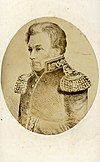 | Juan José Viamonte
(1774-1843).
| 18 April 1815
| 20 April 1815
| In line with the Third Triumvirate.
|
 | José Rondeau
(1775-1844) | 20 April 1815
| He was appointed interim to replace the Third Triumvirate, however, absent in his appointment, as he was in military campaigns in Upper Peru, he was unable to exercise, and immediately he was appointed Alvarez Thomas.
|
 | Ignacio Álvarez Thomas
(1787-1857) | 20 April 1815
| 17 April 1816
| Appointed interim to the Tucumán Congress, he tried to reoccupy Santa Fe, but his troops were defeated. Given its opposition to Artigas, it did not allow the East Bank to participate in the aforementioned Congress. He resigned from his post, due to the failure in the Province of Santa Fe.
|
 | Antonio González Balcarce
(1774-1819) | 17 April 1816
| 9 July 1816
| He was interim until the Declaration of Independence, ending the period for which his predecessor had also been appointed internly. During his government, the Tucumán Congress declared national independence.
|
 | Juan Martín de Pueyrredón
(1776-1850) | 9 July 1816
| 9 June 1819
| He was appointed by the Tucumán Congress. During his government, the military campaigns of San Martín and Belgrano were carried out, which he supported. He created the first National Bank. He tried to sanction a unitary constitution in 1819, whose failure led him to the resignation.
|
 | José Rondeau
(1775-1844) | 9 June 1819
| 1 February 1820
| Designated as an interim after the resignation of Pueyrredón, during his government he continued his support for San Martín and Belgrano. However, he did not obtain political support from the other provinces, which defeated him in the Battle of Cepeda, a fact that motivated his resignation.
|
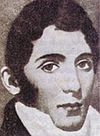 | Juan Pedro Aguirre
(1781-1837) | 1 February 1820
| 11 February 1820
| He took as an interim after Rondeau's resignation, but due to the defeat at Cepeda the Board dissolved and must have resigned ten days after he had assumed.
|
Provincial autonomies
Main articles: Situation of the Argentine provinces since 1820 and Period of Provincial Autonomy (Argentina).
Between 1820 and 1852 each province had its own government and its own authority was the governor, without there being a central power over them. Many provinces signed constitutions, others allied with neighbors. Provincial caudillos also arose in this period, who were generally military men with money, prestige, and popularity in the town. However, the province of Buenos Aires maintained a legal and de facto primacy thanks to various treaties, such as the Quadrilateral (1820) or the Federal Pact of 1831.
During this period there was an ephemeral attempt at national organization that failed, given that the sanction of the Constitution of 1826 was of a centralist nature, so the form it adopted was a unitary republic, electing Bernardino Rivadavia as its first president among 1826 and 1827, who was the first President of the Argentine Nation.
The period ended with the overthrow of the Buenos Aires leader Juan Manuel de Rosas in 1852, in the Battle of Caseros.
Governors of Buenos Aires in exercise of the de facto National Executive Power (1820-1826)
Main article: Governors of Buenos Aires
After the fall of the central government, defeated by the federal caudillos in the First Battle of Cepeda, in February 1820, the provinces of Buenos Aires, Santa Fe, Entre Ríos and Corrientes sealed a series of pacts (Treaty of Pilar, Treaty of Benegas and the Treaty of the Quadrilateral), which established national unity and the federative form of government. Little by little, all the provinces adhered to these treaties, which provided for the realization of a Constituent Congress, which would finally meet in 1824. Meanwhile, between 1820 and 1824, Argentina lacked a national government, a role that was occupied de facto by the government of the province of Buenos Aires. This situation was legalized by the Fundamental Law, issued by Congress, which delegated the country's foreign relations to the government of Buenos Aires.
| Image
| Governor
| Start of government
| End of government
| Government work
|
|---|
 | Matías de Irigoyen
(1781-1839) | 11 February 1820
| 18 February 1820
| He was appointed provisionally until the appointment of Manuel de Sarratea, who was outside the City of Buenos Aires and whom he had previously appointed the Cabildo.
|
 | Manuel de Sarratea
(1774-1849) | 18 February 1820
| 6 March 1820
| Named by the newly formed Board of Representatives, the political crisis in the country led to the lack of support from both Buenos Aires and the rest of the provinces. In this way he resigned from his post shortly afterwards.
|
 | Juan Ramón Balcarce
(1773-1836) | 6 March 1820
| 11 March 1820
| After Sarratea's resignation, he was appointed provisional governor. After 5 days of disorders and dismantlings he resigned, and, in the face of the vacancy of candidates for the post, Sarratea agreed to power again.
|
 | Manuel de Sarratea
(1774-1849) | 11 March 1820
| 2 May 1820
| He returned to office after the end of the brief Balcarce government, which had emerged from the bache that had left with his resignation and had also lacked political support. The circumstances did not improve and ended up resigning for the second time.
|
 | Ildefonso Ramos Mexía
(1769-1854) | 2 May 1820
| 20 June 1820
| Designated as owner governor throughout the full of political, economic and military powers for the space of eight months He appointed a council formed by notables, although he was removed shortly after the prevailing crisis.
|
 | The Cabildo of Buenos Aires, Ildefonso Ramos Mexía and Miguel Estanislao Soler are made with power simultaneously
| 20 June 1820
| 23 June 1820
| See also: Day of the three governors The Cabildo, whose assembly was presided by Juan Norberto Dolz, dismissed Ramos Mexía, however this had not been reported, so he still held the title. Soler, for his part, starred in an uprising where he proclaimed himself governor.
|
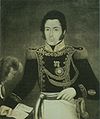 | Miguel Estanislao Soler
(1783-1849) | 23 June 1820
| 29 June 1820
| He assumed de facto, after an armed uprising, however his government lasted a few days, when the Board of Representatives removed authority and appointed Manuel Dorrego.
|
 | Manuel Dorrego
(1787-1828) | 29 June 1820
| 20 September 1820
| He was appointed provisional governor until the inauguration of a new constitutional governor. During his short period he had to face serious political problems.
|
 | Martín Rodríguez
(1771-1845) | 20 September 1820
| 2 April 1824
| He signed the Treaty of Benegas and the Quadrilátero, both of peace. He created the discount bank, removed the lobby, proclaimed the enfiteusis system, etc. He also requested the first loan from Argentina.
|
 | Juan Gregorio de Las Heras
(1780-1866) | 2 April 1824
| 7 February 1826
| He called for a Constituent Congress, which sanctioned several laws, including the Fundamental and the Presidency, which proclaimed the Unitarian Republic. He resigned on the occasion of that republic.
|
Presidents (1826-1827)
Main article: Presidents of the Argentine Nation
Before the war with Brazil began, Congress deemed it necessary to create a National Executive Power to carry out the war effort. For this reason, on February 6, 1826, he issued the Law of the Presidency. Through this law, a presidential authority was constitutionally declared, thus ending this headless period.
| Image
| President of the Argentine Nation
| Start of government
| End of government
| Government work
|
|---|
 | Bernardino Rivadavia
(1780-1845) | 7 February 1826
| 27 June 1827
| He received little support from the provinces due to his centralist policy. It enacted a capitalization law in Buenos Aires. In addition, he negotiated an unfavourable peace with Brazil, promoted by Britain, which led him to give up.
|
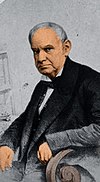 | Vicente López and Planes
(1785-1856) | 7 July 1827
| 17 August 1827
| He assumes internly as vice president, after the resignation of his predecessor. A few days after having assumed, due to the lack of political support, the Republic dissolved, declaring the Basic Law in force again.
|
After the provinces rejected the Constitution of 1826, Congress restored the validity of the Fundamental Law and called a Convention to reform the constitution, after which it was declared dissolved.
Governors of Buenos Aires in exercise of the National Executive Power (1827-1831)
Main article: Berber governors in exercise of the National Executive
| Image
| Governor
| Start of government
| End of government
| Government work
|
|---|
 | Manuel Dorrego
(1787-1828) | 17 August 1827
| 1 December 1828
| Federal, pressured by Britain continued the Rivadavia treaty with Brazil, with the modification that Uruguay emerged as an independent state. The unitaries, headed by Lavalle, began to conspire, causing a revolution after which he was shot.
|
 | Juan Galo Lavalle
(1797-1841) | 1 December 1828
| 26 June 1829
| After overthrowing Dorrego, he ruled de facto, winning the rejection of the feds, led by Juan Manuel de Rosas and Estanislao López. These led a revolution after which he was overthrown and sent into exile.
|
 | Juan José Viamonte
(1774-1843) | 26 June 1829
| 6 December 1829
| From a federal tendency, he ruled provisionally until Juan Manuel de Rosas, the author of the coup.
|
 | Juan Manuel de Rosas
(1793-1877) | 6 December 1829
| 4 January 1831
| His most important work was to sign the Federal Covenant with several provinces to obstruct the unitary advance, led by José María Paz. Since 1831, Buenos Aires reserved the country's foreign relations. When the Board of Representatives ratified it in its office, but denied it extraordinary powersHe quit.
|
Argentine Confederation (1831-1861)
As a result of the civil war between the Unitarians and the Federals (1828-1831), the provinces of the Federal League (Buenos Aires, Santa Fe, Entre Ríos and Corrientes) signed, on January 4, 1831, the Federal Pact, which established a Representative Commission that would be in charge of the foreign relations of the Confederation. This Commission delegated the direction of foreign business to the government of Buenos Aires. After the unitary defeat, the rest of the provinces adhered to the Pact, which would function as a virtual magna carta until the sanction of the 1853 constitution.
Governors of Buenos Aires, in charge of foreign relations (1831-1852)
| Image
| Governor
| Start of government
| End of government
| Government work
|
|---|
 | Juan Manuel de Rosas
(1793-1877).
| 4 January 1831
| 17 December 1832
| His most important work was to sign the Federal Covenant with several provinces to obstruct the unitary advance, led by José María Paz. Since 1831, Buenos Aires reserved the country's foreign relations. When the Board of Representatives ratified it in its office, but denied it extraordinary powersHe quit.
|
 | Juan Ramón González Balcarce
(1773-1836) | 17 December 1832
| 4 November 1833
| Promoted by Rosas to hold office after his resignation, he did not have the support of his followers, who, led by Encarnación Ezcurra, starred in the Revolution of the Restorators that led him to resign.
|
 | Juan José Viamonte
(1774-1843) | 4 November 1833
| 27 June 1834
| He assumes internly, appointed by the Board of Representatives, as in the government of his predecessor, he lacked the Rosist support, so he had several pressures that led him to resign.
|
 | Manuel Vicente Maza
(1779-1839) | 27 June 1834
| 7 March 1835
| When in January 1835 the assassination of the riojano leader Juan Facundo Quiroga, ally of Rosas, became a political scandal, must have resigned.
|
 | Juan Manuel de Rosas
(1793-1877) | 7 March 1835
| 3 February 1852
| With the sum of the public power (full judicial, political and legislative control) initiated political persecution of its opponents. It established agreements with various leaders. He must have endured the Anglo-French blockade to the port of Buenos Aires. He was defeated in Caseros by Justo José de Urquiza, resigning because of it.
|
 | Vicente López and Planes
(1785-1856) | 3 February 1852
| 6 April 1852
| It assumes provisionally, appointed by Urquiza after the Battle of Caseros, by the San Nicolás Agreement, the executive branch and the foreign affairs of the country are temporarily transferred to Urquiza.
|
End of Buenos Aires rule:
During the seventeen years that his government lasted, Rosas established a strong influence in the other provinces, supporting caudillos who responded to him. This situation was consolidated after the death, in 1838, of Estanislao López (governor of Santa Fe and "patriarch of the federation") and the failure of the Anglo-French naval blockade (1846-1848), which was supported by a unitary insurrection. Thus, starting in 1850, the oppressive climate relaxed, which allowed the governor of Entre Ríos, Urquiza, to accept the traditional annual resignation that Rosas made each year from the performance of foreign relations on May 1, 1851. Urquiza defeated Rosas on February 3, 1852 at the Battle of Caseros, a defeat after which Rosas resigned and left the country.
Governor of Entre Ríos, in charge of foreign relations (1852)
Once the Battle of Caseros was over, the victor Justo José de Urquiza appointed Vicente López y Planes as governor of Buenos Aires. Due to the Federal Pact still in force, the National Executive Power and the Foreign Relations of the country still fell to the governor of that province, in this case, López y Planes.
When López y Planes resigned, Urquiza determined that the governor of Entre Ríos be the one to exercise Foreign Relations of the Argentine Nation, which at that time was himself, without pacts, an action that was frowned upon by Buenos Aires, which started the separation process.
In view of this, on May 31, 1852, the provinces signed the Agreement of San Nicolás which established the following:
- A Constituent Congress would meet whose mission would be to draft a Constitution for the Confederation, something that finally happened in May 1853.
- Urquiza would be Director of the Argentine Confederation, relapsed into it the Executive and Foreign Affairs until 1854, the year in which presidential elections would take place.
| Image
| Governor
| Start of government
| End of government
| Government work
|
|---|
 | Just José de Urquiza
(1801–1870).
| 6 April 1852
| 31 May 1852
| |
Provisional Director of the Argentine Confederation (1852-1854)
| Image
| Director Provisorio
| Start of government
| End of government
| Government work
|
|---|
 | Just José de Urquiza
(1801–1870).
| 31 May 1852
| 5 March 1854
| Punishment of the Constitution of 1853.
|
Presidents (1854-1861)
Main article: Presidents of the Argentine Nation
Starting in 1852 and with the approval of the Argentine Constitution of 1853, people began to speak of the Argentine Nation, presided over by a national constitutional authority representing all the provinces. However, between 1852 and 1862 there was no stable political-administrative order, the Province of Buenos Aires had separated from the rest, forming the State of Buenos Aires and the Argentine Confederation separately.
During the period of separation, Buenos Aires experienced economic prosperity thanks to the income provided by Customs, although the Confederation had almost no income. Justo José de Urquiza, president of the Confederation, took some measures to block the trade of Buenos Aires but none of them were fruitful. The two states coexisted peacefully until 1859.
In that year, the troops from Buenos Aires, under the command of Bartolomé Miter, faced those of the Confederation, under the command of Urquiza in the battle of Cepeda, the latter triumphing. As a consequence of this, the entrance of Buenos Aires to the Confederation was negotiated, but the diplomatic failure led to another battle, the Battle of Pavón (1861) where Mitre's army won. As a consequence, the entry of Buenos Aires into the Confederation was agreed, but under the terms that seemed convenient to the new province.
| Portrait
| Name
(birth-death) | Lapso
| Election
| Party
| Vice-Chairman
|
|---|
|  | Just José de Urquiza
(1801–1870) | 5 March 1854
| 5 March 1860
| 1853
| Federal
| Salvador María del Carril
|
| Elect in indirect elections. During his government the Constitution of 1853 entered into force, the University of Córdoba was nationalized and the free navigation of the rivers was proclaimed. In order to hinder the trade of Bosnians, a law was proclaimed to cover the taxes of the coastal ports, although the measure failed. At the end of his government the Battle of Cepeda broke out against the state of Buenos Aires, the re-encompassment to the Confederation was then negotiated in the Pact of San José de Flores.
|
|  | Santiago Derqui
(1809–1867) | 5 March 1860
| 5 November 1861
| 1860
| Federal
| Juan Esteban Pedernera
|
| Elect in indirect elections. During his brief government he had to deal with the problems with the state of Buenos Aires. As he was defeated in the Battle of Pavón by Bartolomé Mitre and after the failure of the Pact of Saint Joseph of Flores, he resigned.
|
| 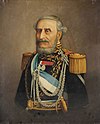 | Juan Esteban Pedernera
(1796-1886) | 5 November 1861
| 12 December 1861
| -
| Unit
| Vacant |
| Vice President of Santiago Derqui, assumed the presidency after his resignation. Unable to control the situation resigned, giving Bartolomé Mitre the National Executive.
|
Argentine Republic (1861-Present)
Main article: Presidents of Argentina
Principal level: Presidents of Argentina
From 1861 onwards, the country was organized under the federal representative republican form of government, with one authority, the president, and various subordinate officials. Throughout history there have been several military and civilian coups that have overthrown presidents (1930, 1943, 1955, 1962, 1966 and 1976), also several popular revolutions (1890, 1893, 1905 and 2001), democratic governments and military, provisional and interim. Initially, the president's term was set at six years, although with the constitutional reform of 1994 the period decreased to four years, imitating other federal republics such as the United States or Brazil.
Historic Presidencies (1861-1880)
The first three presidencies, those of Bartolomé Mitre, Domingo Faustino Sarmiento and Nicolás Avellaneda, are known as historical presidencies.
In this period, the national union was solidified, with brief and unsuccessful uprisings by some caudillos, such as Ricardo López Jordán and Chacho Peñaloza. A modernization process also began, which made possible the first export of frozen meats to the international market in 1877. Railroads were also extended, a task that had begun in 1857 in the State of Buenos Aires. In addition, the Argentine Army was organized and several schools were founded at different levels. In 1879, the war against the natives who occupied the territories of Patagonia was carried out, in such a way that control of that region was taken from them.
Presidents
| Portrait
| Name
(birth-death) | Lapso
| Election
| Party
| Vice-Chairman
|
|---|
|  | Bartolomé Mitre
(1821-1906) | 12 December 1861
| 12 April 1862
| -
| Liberal
| Vacant |
| Governor of the province of Buenos Aires and de facto In charge of the national executive branch after the Battle of Pavón and the resignation of Juan Esteban Pedernera. During the following months the provinces grant Mitre different powers.
|
| 12 April 1862
| 2 June 1862
| -
| Liberal
| Vacant |
| After obtaining the support of the provinces, he appointed himself by decree as "Governor of the Province of Buenos Aires, in charge of the National Executive".
|
| 2 June 1862
| 12 October 1862
| -
| Liberal
| Vacant |
| The National Congress appoints the Governor of the Province of Buenos Aires as the head of the National Executive, until new elections are called.
|
| 12 October 1862
| 12 October 1868
| 1862
| Liberal
Nationalist
| Marcos Paz
12 October 1862 – 2 January 1868
(He died in office) |
| Vacant |
| Elect in indirect elections as the sole candidate. First president of the unified country. During his government he had to face armed uprisings of some warlords who easily suffocated. He also led the Triple Alliance War, which helped form the National Army.
|
|  | Marcos Paz
(1811-1868) | 12 June 1865 | 2 January 1868 | -
| Liberal
| Himself |
| Vice President of Bartolomé Mitre, he was delegated provisionally to allow Mitre to command the Army in the War of the Triple Alliance. He died in office.
|
|  | Cabinet of Ministers | 2 January 1868 | 18 January 1868 | -
| -
| Vacant |
Members: Guillermo Rawson (Interior), Marcelino Ugarte (Foreign Relations), Lucas González (Hacienda) and José Evaristo Uriburu (Justice).
After the death of Marcos Paz, ministers coordinated by the Minister of the Interior dictated the acts of government until Mitre returned from Paraguay.
|
|  | Faustino Sarmiento
(1811–1888) | 12 October 1868
| 12 October 1874
| 1868
| -
| Adolfo Alsina
|
| Elect in indirect elections. During his government there was a boom in the press, forming several newspapers. The Triple Alliance War ended. In 1869 the first national census was carried out, which revealed 71 per cent of illiteracy and the following year a yellow fever epidemic broke out in Buenos Aires. It founded around 800 schools and several faculties. He did not manage Congress to sanction the land law by promoting a type of rural colonization with landlords who discouraged the land. At the end of 1873 an economic crisis erupted.
|
| 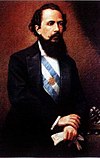 | Nicolás Avellaneda
(1837–1885) | 12 October 1874
| 12 October 1880
| 1874
| National
↓
PANEL
| Mariano Acosta
|
| Elect in indirect elections. He pursued a policy to address the economic crisis that began in 1873 and to pay the external debt, based on "the hunger and thirst" of the Argentine population. He sanctioned the protectionist Customs Law, which made exports grow (during his government began exports of cold meat to England). He ordered the so-called "Conquista del Desierto", by which Argentina occupied large tracts of land in the possession of indigenous peoples, creating the national territories that in the mid 20th century would give rise to eight new provinces. It sanctioned the Immigration and Colonization Act No. 817 which prompted immigration and at the same time facilitated the strengthening of land and national territories. He sanctioned the Federalization Act, which made Buenos Aires the Federal Capital of the Nation. He was the first of the presidents of the National Autonomous Party, a party that ruled the country uninterruptedly for 42 years, until in 1916 the first presidential elections were held by secret ballot.
|
Hegemony of the PAN (1880-1916)
It is the constitutional period that extends from 1880 to 1916. During it, nine presidents governed, all of them men and belonging to the National Autonomist Party (PAN). One of them, Julio A. Roca, governed in two non-successive terms. The hegemony of the PAN also includes the presidency of Nicolás Avellaneda (1874-1880), included in the previous period.
Political level
This constitutional period lasted from 1880 to 1916, although the hegemony of the PAN began in 1874, with the presidency of Avellaneda. It was characterized for being based on questioned representation, due to the systematic practice of electoral fraud, facilitated by the non-obligatory and indirect sung voting system (non-secret), in which women's right to choose was not recognized. and be chosen. In the eleven presidential elections between 1853 and 1910 the average voter turnout was 1.7% of the total population.
Since 1874, the National Autonomist Party (PAN) began to govern the country, with a liberal-conservative tendency, led by General Julio A. Roca. The PAN virtually established a one-party regime, known as the "Conservative Republic" or "Oligarchic Republic," dominated by an elite known as the Generation of '80. All presidents between 1874-1916 belonged to the PAN, which also controlled both houses of the National Congress with absolute majorities, the Judiciary and all the provinces, with the exception of the radical government of the province of Buenos Aires between 1898 and 1902.
Faced with the lack of free elections, from 1890 an insurrectionary opposition arose, which ended up creating the Radical Civic Union, which resorted to armed struggle and abstention as strategies to overthrow the "regime".
In 1910, a pact between the leaders of the PAN and the radicalismo (Roque Sáenz Peña and Hipólito Yrigoyen) allowed the sanction of the Sáenz Peña Law of 1912, establishing secret and compulsory voting, only for men. The legislative elections of 1914 were the first to be held under the Sáenz Peña Law system. The first president elected with the system of said law was the radical Hipólito Yrigoyen, ending this period.
Socioeconomic level
The period was characterized by the full installation of an economic system focused on the production of beef and cereals in the Pampas region, with a predominance of the latifundio (estancia), destined for export to the British Empire, transferred by train to the port from Buenos Aires and from there by boat. In return, Argentina imported from Great Britain most of the manufactures it needed. Production and population grew exponentially, the latter due to a wave of massive immigration promoted by the State, which went from 1.8 million in 1869 (0.13% of the world population) to 7.9 million in 1914 (0.44% of the world population).
Presidents
| Portrait
| Name
(birth-death) | Lapso
| Election
| Party
| Vice-Chairman
|
|---|
|  | Julio Argentino Roca
(1843–1914) | 12 October 1880
| 12 October 1886
| 1880
| PANEL
| Francisco Bernabé Madero
|
| Elect in indirect elections. He unified the national currency in 1881, sanctioned education laws such as Law 1420 on Public, Lay and Free Education (1884), continued to extend the railways, created the Civil Registry, which led him to a confrontation with the Catholic Church, breaking relations with the Holy See.
|
|  | Miguel Juárez Celman
(1844-1909) | 12 October 1886
| 6 August 1890
| 1886
| PANEL
| Carlos Pellegrini
|
| Elect in indirect elections. During his government he increased indebtedness with England, and worsened the banking situation, fomented immigration. For his policy Unicato He was severely criticized. He must have endured the economic crisis. He suffocated the Revolution of 1890, but was forced to give up losing political support.
|
|  | Carlos Pellegrini
(1846-1906) | 6 August 1890
| 12 October 1892
| -
| PANEL
| Vacant |
| Vice President of Miguel Juárez Celman, assumed the presidency after his resignation. He managed to solve the crisis, healing the finances and creating the Banco de la Nación Argentina. It encouraged immigration and initiated a policy of indebtedness. He named Roca Minister of War and PAN leader. Presidential period 1886-1892 ended.
|
| 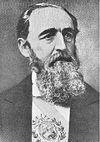 | Luis Sáenz Peña
(1822-1907) | 12 October 1892
| 22 January 1895
| 1892
| PANEL
| José Evaristo Uriburu
|
| Elect in indirect elections. Proposed by Roca as a candidate for the PAN, Sáenz Peña ruled in an atmosphere hostile to his person, supporting various criticisms and armed uprisings such as the radical revolution of 1893. With a lack of political support and his party resigned.
|
| 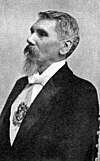 | José Evaristo Uriburu
(1831–1914) | 22 January 1895
| 12 October 1898
| -
| PANEL
| Vacant |
| Vice President of Luis Sáenz Peña, assumed the presidency after his resignation. It founded the Museum of Fine Arts, organized the different ministries of the executive branch and during its mandate the Constitution was reformed in 1898. Presidential period 1892–1898 ended.
|
|  | Julio Argentino Roca
(1843–1914) | 12 October 1898
| 12 October 1904
| 1898
| PANEL
| Norberto Quirno Costa
|
| Elect in indirect elections. In his second government, he went through two border conflicts with Chile (1899 and 1902), he continued the policy of deindebtedness and the agro-exporting economic model, and the approval of a Labour Code had been planned, which was ultimately not carried out by opposition from both businessmen and trade unions.
|
| 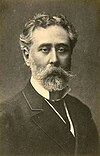 | Manuel Quintana
(1835-1906) | 12 October 1904
| 12 March 1906
| 1904
| PANEL
| José Figueroa Alcorta
|
| Elect in indirect elections. He was the candidate of the PAN, and therefore had political support, followed the socio-economic reforms of his predecessors. In 1905 he had faced the last radical armed uprising, which could successfully suffocate. Nationalized the University of La Plata. Since 1906 he took a license, occupying the presidency his vice president. He was the first president to die in office.
|
|  | José Figueroa Alcorta
(1860-1931) | 25 January 1906 | 12 March 1906 | -
| PANModernist
| Himself |
| Vice-President of Manuel Quintana, he was delegated provisionally for the president's health problems.
|
| 12 March 1906
| 12 October 1910
| -
| PANModernist
| Vacant |
| Vice President of Manuel Quintana, assumed the presidency after his death. Oil farms began in Comodoro Rivadavia, but it had to face social problems, such as the workers' demonstration called "Red Week", the murder of Colonel Falcón. He presided over the Centennial celebrations. It ended the presidential period 1904–1910.
|
|  | Roque Sáenz Peña
(1851–1914) | 12 October 1910
| 9 August 1914
| 1910
| PANModernist
| Victorino de la Plaza
|
| Elect in indirect elections. During his government he tried to democratize the electoral system, carrying out the reform with the Sáenz Peña Act in 1912. This won the opposition of his own party. From 1913 he took a license, occupying the presidency his vice president. He died in office.
|
|  | Victorino de la Plaza
(1840-1919) | 9 August 1914
| 12 October 1916
| -
| PANEL
| Vacant |
| Vice President of Roque Sáenz Peña, assumed the presidency after his death. He was the last president of this period. Among its achievements are the 1914 census and keeping Argentina neutral during the First World War. Presidential period 1910–1916 ended.
|
The radical presidencies (1916-1930)
The first radical presidencies marked the beginning of the democratization of the election of authorities in Argentina, as it was the result of the Sáenz Peña Law, sanctioned in 1912, which established the secret and obligatory vote of male citizens. They lasted from 1916 until the military coup of 1930, the first in a series that would last until the end of the century XX.
Political level
The Sáenz Peña Law of 1912 established secret and compulsory voting for men. The reform made it possible to eliminate the systematic electoral fraud that characterized the previous period. The radicalism in power was divided between yrigoyenistas and "antipersonalistas", referenced in Hipólito Yrigoyen and Marcelo T. de Alvear, respectively. In 1924 the Radical Civic Union (UCR) suffered an important division when the Antipersonalist Radical Civic Union (UCRA) was created. The 1928 presidential elections became polarized between the two radical parties. The conservative sectors contrary to the Sáenz Peña Law and the anti-personalists adopted a position that denied democratic legitimacy to the presidency of Hipólito Yrigoyen. In 1930, after 68 years of constitutional continuity, the president and the National Congress were overthrown by a coup that imposed an authoritarian regime with a conservative profile, the first in a series that would last until December 10, 1983.
Socioeconomic level
During the radical period the trade union movement grew considerably. The radical governments, contrary to their conservative predecessors, legitimized the strike and promoted collective bargaining, but during their administration the largest worker massacres in Argentine history took place: the Tragic Week, the Rebel Patagonia, the massacres in La Forestal and the Napalpi Massacre. The social violence of the period was also reflected in the pogrom (killing of Jews) -unique in the history of America- committed by the extreme right-wing parapolice group Liga Patriotica Argentina.
During the First World War (1914-1918) the conservative and radical governments ordered the neutrality of the country in the conflict. Argentina was benefited by the end of the war, due to the reopening of the European market to which it destined almost all of its production and went through a period of prosperity in the 20s. But towards the end of the period there was the Crac of 1929, which began the Great Depression and put an end to the free trade era on which the global power of the British Empire and the Argentine agro-export model had been built.
Presidents
| Portrait
| Name
(birth-death) | Lapso
| Election
| Party
| Vice-Chairman
|
|---|
|  | Hippolyte Yrigoyen
(1852-1933) | 12 October 1916
| 12 October 1922
| 1916
| UCR
| Pelagio Luna
12 October 1916 – 25 June 1919
(He died in office) |
| Vacant |
| Elect in indirect elections. First President-elected with the Sáenz Peña Law on the secret and compulsory vote of male citizens. He maintained neutrality in World War I adopted by his conservative predecessor. He supported and promoted the university reform movement. He legitimized the strike and promoted collective bargaining, but during his government troops under his command caused the workers' massacres known as the Tragic Week and the rebellious Patagonia, and the only pogrom (Jewish lynching) that occurred in America, with thousands of people killed.
|
|  | Marcelo Torcuato de Alvear
(1868-1942) | 12 October 1922
| 12 October 1928
| 1922
| UCR
| Elpidio González
|
| Elected in indirect elections, by the Sáenz Peña Law of secret and compulsory vote of male citizens. It belonged to the radical “antipersonalist” faction, which questioned by authoritarian the figure of Hippolytus Yrigoyen. During his government and with his tolerance, the Radical Civic Union was fractured and the Antipersonalist Radical Civic Union was created, which became the main opposition party. The state-owned company Yacimientos Petrolíferos Fiscales (YPF) created to self-supply the domestic fuel market. The economic situation was prosperous due to the bonanza of international markets.
|
|  | Hippolyte Yrigoyen
(1852-1933) | 12 October 1928
| 6 September 1930
| 1928
| UCR
| Enrique Martínez
|
| Elected in indirect elections, by the Sáenz Peña Law of secret and compulsory vote of male citizens. Yrigoyen sought his re-election and for this he must have confronted anti-personnel radicalism and conservative sectors, which qualified him as dictator. He won 61% of the votes and thirty percentage points of advantage against his anti-personnel adversaries. He took part in a political scandal for the murder of opposition senator Carlos Washington Lencinas, which the opposition press attributed to him. His last measure was to fix the price of oil, breaking the private cartel. He was overthrown in a coup d’etat that has been said “he smelled oil”.
|
|  | Enrique Martínez
(1887-1938) | 5 September 1930 | 6 September 1930 | -
| UCR
| Himself |
| Vice President of Hipólito Yrigoyen, was delegated to him provisionally for the president's health problems. He was overthrown in a coup.
|
The infamous decade (1930-1943)
Political level
Between the coup d'état of 1930 and that of 1943, a weak democracy existed in the country ―except during the military government of José Félix Uriburu, when there was no democracy―, in which electoral fraud was frequent and public.
Both Agustín Pedro Justo and Roberto M. Ortiz were elected with extensive electoral fraud.
The coup that put an end to this period did not receive civic support, unlike the previous one, because the constitutional government had a good public opinion. Among the reasons that the Army had for staging the coup is that, if the 1944 elections had been allowed, parties that supported Argentina's entry into World War II and against the Rome-Berlin-Tokyo Axis would have won, something that the putschists wanted to avoid.
Socioeconomic level
The New York stock market crash that had repercussions in Argentina unleashed a serious global economic crisis: the Great Depression of 1929, which affected all societies at the time and would last for several years.
During this period, the so-called villas miseria arose around the City of Buenos Aires and Greater Buenos Aires began to have a boom.
Immigration was already low, although many of the immigrants still remained in the country.
The different governments tried various measures to calm the situation, such as the Roca-Runciman Pact, although they were not totally effective. The crisis would gradually disappear towards the beginning of the year 1940.
Presidents
| Portrait
| Name
(birth-death) | Lapso
| Election
| Party
(Alliance) | Vice-Chairman
|
|---|
|  | José Félix Uriburu
(1868–1932) | 6 September 1930
| 20 February 1932
| -
| Military
| Enrique Santamarina
6 September 1930 – 20 October 1930
(resigned) |
| Vacant |
| After the coup, the dictatorship was legalized by the Supreme Court through the doctrine of de facto governments. Corporatist and sympathizer of the Nazism, dissolved the Congress, proclaimed the state of siege, empowered electric torture in the police force, reversed university reform and, although he claimed to respect the Constitution, was the first Argentine president to apply state terrorism. He called for elections in 1931.
|
| 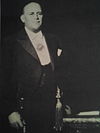 | Agustín Pedro Justo
(1876-1943) | 20 February 1932
| 20 February 1938
| 1931
| UCR-A
(Concordance) | Julio Argentino Pascual Roca
|
| Electo en elecciones indirectes, en representación de la Unión Cívica Radical Antipersonalista (UCRA), donde no se le permite participación a la UCR personalista o yrigoyenista. It applied protectionist and fiscal austerity measures, including the Roca-Runciman Pact, which established an economic unit with England. Working movements led to the formation of the CGT. The 1937 elections took place violently, killings and injuries.
|
| 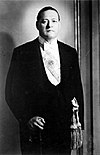 | Roberto María Ortiz
(1886-1942) | 20 February 1938
| 27 June 1942
| 1937
| UCR-A
(Concordance) | Ramón Castillo
|
| Elect in indirect and fraudulent elections, representing the Radical Anti-Personnel Civic Union (UCRA). It was unsuccessful to establish policies to ensure free and democratic elections. One of its most controversial measures was the secret anti-Semite circular. Both he and his replacement maintained Argentinian neutrality before World War II. He suffered from serious diabetes during his tenure, which led him to apply for leave in 1940 and to resign in 1942 a few days before he died.
|
|  | Ramón Castillo
(1873-1944) | 3 July 1940 | 27 June 1942 | -
| PDN
(Concordance) | Himself |
| Vice-President of Roberto María Ortiz, he was delegated provisionally for the president's health problems.
|
| 27 June 1942
| 4 June 1943
| -
| PDN
(Concordance) | Vacant |
| Vice-President of Roberto María Ortiz, took office after his resignation. There were two strikes during his government. He proposed a formula for the 1944 elections that preserved the fraudulent regime, thereby gaining the aversion of the young officiality of the Army, which by then had been left without leadership because of the death of General Agustín P. Just and he led the coup that ended his presidency.
|
Presidents of the Revolution of 1943 (1943-1946)
It was the period from the 1943 coup, which overthrew Ramón Castillo, until the assumption of Juan Domingo Perón in 1946.
Political level
During this period, three soldiers held the de facto presidency: Arturo Rawson, Pedro Pablo Ramírez and Edelmiro Farrell. During it, there was a political persecution of workers, trade unionists and communists. Congress and provincial governments were dissolved. The then Colonel Juan Domingo Perón had an active participation from the General Secretariat of Labor and Social Welfare. Political parties were also dissolved.
On the international level, the government of Edelmiro Farrell declared war on the Axis when the conflict was almost over and this brought no benefits to Argentina.
Socioeconomic level
The de facto rulers established Catholic education in public and private schools and intervened in universities, prohibited Lunfardo as they considered it antimoral and repugnant, and also imposed significant censorship on the press.
In terms of the economy, a fiscal austerity plan was imposed, and a reduction in public spending, for which it won the support of businessmen and landowners.[citation required]
Presidents
| Portrait
| Name
(birth-death) | Lapso
| Election
| Party
| Vice-Chairman
|
|---|
| 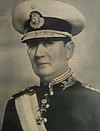 | Arturo Rawson
(1885–1952) | 4 June 1943
| 7 June 1943
| -
| Military
| Vacant |
| He assumed provisionally after the coup for a few days, until the appointment of Pedro Pablo Ramírez, who had been the co-organizer of the coup.
|
|  | Pedro Pablo Ramírez
(1884-1962) | 7 June 1943
| 9 March 1944
| -
| Military
| Saba Sueyro
7 June 1943 – 15 October 1943
(He died in office) |
Edelmiro Julián Farrell
15 October 1943 – 9 March 1944
|
| Assumed de factowith the support of the GOU. He applied several methods of censorship, reinstated Catholic teaching in schools, pursued the workers, trade unionists and communist groups. It dissolved Congress and provincial governments and implemented an economic plan of fiscal austerity. On February 24, 1944, Ramirez "delegated the charge" internly in General Edelmiro Farrell and on March 9 he resigned.
|
|  | Edelmiro Julián Farrell
(1887-1980) | 25 February 1944 | 9 March 1944 | -
| Military
| Himself |
| Vice President of Pedro Pablo Ramirez, he was delegated provisionally.
|
| 9 March 1944
| 4 June 1946
| -
| Military
| Vacant |
Juan Domingo Perón
8 July 1944 – 9 October 1945
(resigned) |
Juan Pistarini
9 October 1945 – 4 June 1946 |
| He replaced Pedro Pablo Ramírez, being appointed by the GOU. He established the aguinaldo (an additional annual wage), sanctioned the Statute of the Field Pawn, signed the Act of Chapultepec and declared war on Axis. He called for elections in July 1945. During his government there was a civic-military coup d’etat, which deposed and detained Vice President Juan Domingo Perón and, on October 17, 1945, generated a great workers’ mobilization that forced the government to release Perón; the date is considered to be the date of founding Peronism.
|
Perón's first two presidencies (1946-1955)
| Portrait
| Name
(birth-death) | Lapso
| Election
| Party
(Alliance) | Vice-Chairman
|
|---|
|  | Juan Domingo Perón
(1895-1974) | 4 June 1946
| 4 June 1952
| 1946
| -
(Laborist)
(UCR-JR)
(Independent) | Hortensio Quijano
4 June 1946 – 3 April 1952
(He died in office) |
| Vacant |
| Elect in indirect elections, under the Sáenz Peña Law of secret and compulsory vote for male citizens. It formulated the Constitution of 1949, located within social constitutionalism, which guaranteed equality between men and women, the rights of workers, elderly and children, university autonomy and the social function of property, direct vote and presidential re-election. The Women ' s Fellowship Act was adopted. The national territories were provincialized, thereby allowing the exercise of the political rights of their inhabitants. The industrialization and nationalization of large enterprises and strategic services were promoted. It pursued a public health policy that allowed the eradication of endemic diseases and the extension of health care. The trade union organization, collective bargaining, the increase of real wages, workers' housing and social tourism were promoted.
|
| 4 June 1952
| 19 September 1955
| 1951
| Peronista
(PPF) | Vacant |
Alberto Tessaire
7 May 1954 – 16 September 1955
(resigned) |
| Vacant |
| Elect in direct and democratic elections. First choice to allow female suffrage. At the beginning of his second government, his wife, Eva Perón, died. In 1952 he called trade unions and employers to the National Congress of Productivity to confront the economic crisis. In 1954 he succeeded in sanctioning Law 14.394, which included divorce, as part of a confrontation with the Catholic Church, which joined the coup groups. He suffered terrorist attacks organized by the anti-peronist opposition, such as the May Square attack of April 15, 1953 and the May Square Bombardment that caused hundreds of victims. He was overthrown in a coup.
|
Liberating Revolution (1955-1958)
The self-styled Liberating Revolution was a dictatorship imposed by the coup that overthrew President Juan D. Perón, the National Congress, the Supreme Court, and all provincial governments. It inaugurated a period of prohibition and persecution of Peronism that lasted for eighteen years until 1973. It was part of the series of coups that between 1930 and 1976 overthrew the radical and Peronist constitutional governments.
Political level
The Liberating Revolution had two marked stages. The first stage was led by General Lonardi, seeking to incorporate Peronism and its principles into Argentine political life, without admitting Perón's presence. The second stage, led by General Aramburu and Admiral Rojas, decided to harshly repress Peronism and "de-peronize" the population. During this stage, the ideas, books and symbols of Peronism were criminalized, and even the mention of the names of Juan Domingo Perón and Eva Perón, and the execution of the military and civilians who participated in the Valle uprising was ordered. Likewise, the Constitution was abolished by the military side and a new constitutional text was put into effect, decided by representatives elected in non-democratic conditions. The persecution and criminalization of Peronism resulted in the organization of the Peronist Resistance.
Socioeconomic level
The dictatorship's economic policy adopted a right-wing conservative profile, denationalizing bank deposits and ending controls on foreign trade. The government joined the International Monetary Fund. He also proceeded to devalue the currency, with the purpose of stimulating exports, which were fundamentally agricultural.
In social matters, the unions were intervened and the 1957 budget included several reforms that harmed the salaried sectors.
Presidents
| Portrait
| Name
(birth-death) | Lapso
| Election
| Party
| Vice-Chairman
|
|---|
|  | José Domingo Molina Gómez
(1896-1969) | 19 September 1955
| 23 September 1955
| -
| Military
| Vacant |
| Molina Gómez (left), was appointed to occupy the presidential post after the overthrow of Perón, but the board of directors of the coup appointed Eduardo Lonardi, debiendo Molina Gómez to resign.
|
|  | Eduardo Lonardi
(1896–1956) | 23 September 1955
| 13 November 1955
| -
| Military
| Isaac Rojas
|
| Lonardi tried that the dictatorship's policy would allow a negotiation between Peronists and anti-peronists, which was reflected through phrases like "No winners, no defeats". Opposed to his conciliatory policy with Peronism, the anti-peronist wing of the Army and the Navy defeated him by a palatial coup, assuming power General Pedro Eugenio Aramburu with the title of president, and Admiral Isaac Rojas, with the title of vice president.
|
|  | Pedro Eugenio Aramburu
(1903-1970) | 13 November 1955
| 1 May 1958
| -
| Military
| Isaac Rojas
|
| Aramburu started a repressive policy towards Peronism, known as "desperonization", which included shootings, imprisonments, political, cultural and sporting persecution, union intervention, the kidnapping and disappearance of Eva Perón's body and the ban on mentioning the names of Juan Domingo Perón and Eva Perón. Trade unions intervened. It repealed by military side the current Constitution and ordered a constitutional reform that was questioned for having been carried out under a dictatorship, with political proscription of Peronism and communism, and without meeting the constitutional requirements. This reform included the current article 14 bis. During his government, the Peronist Resistance began. Aramburu created an advisory body of the dictatorship called the National Advisory Board, composed of representatives of the Radical Civic Union, the National Democratic Party, the Socialist Party, the Progressive Democratic Party, the Christian Democratic Party and the Federal Union.
|
Radical governments with questioned legitimacy (1958-1966)
Between the 1958 elections and the 1966 coup, three radical governments followed one another, two of them elected and one established de facto. The legitimacy of the governments was questioned, due to the validity of a constitutional text established in a non-democratic manner, as well as the proscription of Peronism and other political groups. The period would end with the so-called "Argentine Revolution", in 1966.
Political level
Peronism was banned, the Radical Civic Union remained the main party in the country. However, even during the dictatorship, the radicals divided into two parties, the Intransigent UCR, led by Arturo Frondizi, and the People's UCR, led by Ricardo Balbín. The UCRI adopted a more critical profile of the dictatorship and a position of greater tolerance towards Peronism, while the UCRP adopted a profile closer to the dictatorship and less tolerant of the possibility of Peronism integrating into political life.
In the election that consecrated Arturo Frondizi as president, Peronism and communism were outlawed. In the election that consecrated Arturo Illia, in addition to Peronism and Communism, Frondizismo had also been outlawed while Frondizi himself remained in prison. Both elections were held under a Constitution questioned as illegitimate, for having been held during a dictatorship, with the proscription of Peronism and Communism and without complying with constitutional rules.
During the governments of Frondizi and Illia, the bans on political parties were not completely lifted, especially they continued to ban Peronism, which turned them into governments of questioned legitimacy because they practiced political persecution.
Socioeconomic level
While the governments of Frondizi and Guido did not show high growth rates, the government of Arturo Umberto Illia did, showing GDP expansion levels of around 10% per year.
All the governments of the period continued with a policy of industrialization and deleveraging. Frondizi even applied oil concessions to foreign companies, which were later annulled by Illia.
Presidents
| Portrait
| Name
(birth-death) | Lapso
| Election
| Party
| Vice-Chairman
|
|---|
|  | Arturo Frondizi
(1908-1995) | 1 May 1958
| 29 March 1962
| 1958
| UCRI
| Alejandro Gómez
1 May 1958 – 18 November 1958
(resigned) |
| Vacant |
| Elect in indirect elections, with proscribed Peronism. He won with the support of Peronism and in the first months of his government led a conciliatory policy with that sector, but then implemented a policy of persecution of opposition and trade unionism, through the CONINTES Plan. It promoted industrialization and accepted the internationally imposed economic policies. It was overthrown by a coup d'etat after candidates linked to proscribed Peronism triumphed in some provincial elections held on 18 March 1962, mainly in the Province of Buenos Aires.
|
|  | José María Guido
(1910-1975) | 29 March 1962
| 12 October 1963
| -
| UCRI
| Vacant |
| He took the chair in an intern manner with the agreement of the Supreme Court of Justice, which took the oath of him, founded that in his capacity as interim president of the Senate he was, in accordance with the Acefalia Act, the replacement of the president unable to exercise his post for being detained by the military who had given a coup. In order to assume he signed an agreement with the coup military accepting to meet his government demands. He kept constitutional president Arturo Frondizi under arrest. He declared the National Congress "in recess" without constitutional powers to do so. All provinces intervened. During his presidency there was a war clash between Blues and Colorados, two fractions of the Armed Forces. He reinstated the proscription of Peronism.
|
|  | Arturo Umberto Illia
(1900-1983) | 12 October 1963
| 28 June 1966
| 1963
| UCRP
| Carlos Humberto Perette
|
| Elected in indirect elections, under an anti-democratic sanctioned constitution, with former President Arturo Frondizi in prison, and with proscribed Peronism and Communism. He kept the ban so that former President Juan D. Perón could enter and reside in the country, and in 1964 he asked the Brazilian military dictatorship to stop him to force him back to Spain. He sanctioned a law of political parties that did not establish an explicit ban on Peronism, but during his government Peronism was again banned at the national level by the Judiciary -exceptionally authorized in Mendoza-. It prohibited the unions from adopting political or ideological positions and the police under its command suppressed trade union demonstrations by murdering militants José Mussy, Néstor Méndez and Angel Retamar. He announced oil concessions to private companies that had been made during the Frondizi government. It passed a drug law that was questioned by large economic groups, to the point of being considered the cause of its overthrow. It gained a diplomatic victory by making the United Nations order the United Kingdom to negotiate with Argentina the decolonization of the Malvinas Islands. It also reduced external debt and continued with industrialization. After the victory of candidates linked to Peronism in the 1965 legislative elections, the military began to conspire and with the support of the conservative sectors, the big business groups, Opus Dei, the United States and the vandorist trade unionism, was overthrown in a coup d'etat.
|
Argentine Revolution (1966-1973)
After the coup d'état of June 28, 1966, self-titled the Argentine Revolution and until May 25, 1973, a new de facto period began in Argentina in which three presidents succeeded each other military, Juan Carlos Onganía, Roberto Marcelo Levingston and Alejandro Agustín Lanusse.
Political level
The Argentine Revolution sanctioned the so-called Statute of the Argentine Revolution which was intended to have the same legal value as the Argentine Constitution, which was displaced to a second normative order.
Political parties were again banned, especially Peronism, Radicalism and Communism, which were brutally persecuted. During almost the entire de facto government, the state of siege governed.
By the end of the period, the situation was uncontrollable, so the then president Alejandro Agustín Lanusse called for elections where he did not restrict Peronism, although he did restrict Juan Domingo Perón himself.
Socioeconomic level
In the framework of the persecution of opponents, the revolutionary government began to repress university activity, with police actions such as the night of the long sticks, since the military considered that universities and postgraduate courses were the cradle of communism and subversion.
Many political leaders, intellectuals and university students had to go into exile. In 1969, the Cordobazo broke out, a social demonstration that ended in violent riots thanks to police repression.
In the economic sphere, attempts were made to apply economic measures tending to free markets and pave the way for the introduction of large international monopolies, while important trade union rights were suppressed and strikes and worker activities were repressed.
During this government, the Argentine currency was changed for the first time in the XX century, leaving aside the Peso Moneda Nacional, which had a steep inflation and had been in force since 1896, and was replaced by the Peso Law 18,188. The new currency, established in 1969, however, began to show deficiencies at the end of the military government.
During the government of Lanusse, public spending increased, building various roads, bridges and dams (see: Argentine Revolution).
Presidents
| Portrait
| Name
(birth-death) | Lapso
| Election
| Party
| Vice-Chairman
|
|---|
|  | Revolutionary Board | 28 June 1966
| 29 June 1966
| -
| Military
| |
| Members: Pascual Pistarini, Benigno Ignacio Varela and Adolfo Teodoro Álvarez.
|
|  | Juan Carlos Onganía
(1914–1995) | 29 June 1966
| 8 June 1970
| -
| Military
| |
| He assumed after the coup of 1966. Leader of the Blue side of the Armed Forces established a permanent dictatorship, following the guidelines of the US-driven national security doctrine in the framework of the Cold War. He wrote the Statute of the Argentine Revolution with supraconstitutional rank, abolished political parties, banned social demonstrations and endorsed the murders of protesters (Santiago Pampillón, Juan José Cabral, Máximo Mena, Adolfo Ramón Bello, Luis Norberto Blanco, Hilda Guerrero de Molina, etc.). National public universities intervened, resisted by students and teachers in the so-called Night of the Long Batons. During his dictatorship there was a widespread insurrectional activity, under the form of guerrilla organizations and a large number of "populated" (Correntinazo, Rosariazo, Cordobazo, Tucumanazo, etc.) that weakened the dictatorship and forced its displacement and the opening of an electoral exit.
|
|  | Board of Commanders in Chief of the Armed Forces | 8 June 1970
| 18 June 1970
| -
| Military
| |
| Members: Pedro Gnavi (President), Alejandro Lanusse and Carlos Alberto Rey.
|
|  | Roberto Levingston
(1920–2015) | 18 June 1970
| 23 March 1971
| -
| Military
| |
| Named by the Board of Commanders in Chief, he did not have an important trajectory in the Army, so he did not have much support from it. He appointed the radical Aldo Ferrer as Minister of Economics, who sought to pursue a developmental policy, differing from the prevailing liberal tendency in the economic teams of the Argentine dictatorships. He was a hard and fierce dictator, continuing the unpopular and repressive policies of his predecessor. Unable to control the situation, he was forced to resign.
|
|  | Board of Commanders in Chief of the Armed Forces | 23 March 1971
| 26 March 1971
| -
| Military
| |
| Members: Alejandro Lanusse (President), Pedro Gnavi and Carlos Alberto Rey.
|
| 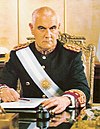 | Alejandro Lanusse
(1918-1996) | 26 March 1971
| 25 May 1973
| -
| Military
| |
| Named by the Board of Commanders and belonging to the blue side of the Armed Forces. Faced with the growing weakness of the dictatorship caused by insurrectional activity, it sought to agree with political parties and trade unions an electoral outlet controlled by the Armed Forces, known as the Great National Agreement (GAN). He returned to Perón the body of Eva Perón that the military and the Church had kept kidnapped and hidden for more than 10 years. During his government there was Trelew Massacre. He began diplomacy with China. The GAN failed due to the coincidences reached between Peronism, radicalism and smear in the People's Hour, although Lanusse succeeded in proscribing Perón and preventing him from being a candidate in the March 1973 elections.
|
Third Peronism (1973-1976)
From the 1973 elections to the 1976 coup, there was a very troubled democratic period where the ruling party was Peronism, which had been banned since 1955.
Political level
After the return of democracy, the state of siege was dissolved and an amnesty was declared for political prisoners (see: Héctor José Cámpora).
Diverse Peronist youth organizations also emerged, such as the Montoneros organization and extreme left-wing armed organizations. This unleashed a civil and social crisis due to their violent actions producing deaths, kidnappings and torture. The situation worsened after the death of Juan Domingo Perón in 1974.
The so-called Argentine Anti-Communist Alliance, led by José López Rega, also arose, which persecuted, tortured and killed leftist militants.
Socioeconomic level
Peronist governments continued to apply economic measures similar to those of their predecessors.
After Perón's death, when his third wife, María Estela Martínez de Perón, took office, the crisis was at a critical point, so he proceeded to devalue the recent currency and apply adjustment plans.
On June 4, 1975, the Minister of Economy Celestino Rodrigo gave rise to the set of economic reforms known as the Rodrigazo. He arranged a brutal adjustment that doubled prices and caused a terminal crisis. Rodrigo wanted to eliminate the distortion of relative prices with a strong devaluation of 160% for the commercial exchange and 100% for the financial exchange. The inflation rate reached three digits per year and nominal prices multiplied by 300%. There was a shortage of a large number of basic necessities, food, fuel and other supplies for transportation.
El Rodrigazo produced a maelstrom of price increases and three weeks later the first general strike against a Peronist government was declared, which lasted 48 hours. José López Rega, Minister of Social Welfare and Rodrigo's political godfather, left his position. This marked the beginning of the definitive decline of the constitutional government of María Estela Martínez de Perón.
Presidents
| Portrait
| Name
(birth-death) | Lapso
| Election
| Party
(Alliance) | Vice-Chairman
|
|---|
| 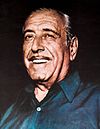 | Héctor José Cámpora
(1909-1980) | 25 May 1973
| 13 July 1973
| March1973
| PJ
(FREJULI) | Vicente Solano Lima
|
| Elected in direct and democratic elections with Juan Domingo Perón proscripto, representing an electoral coalition of Peronists, frondizists, popular conservatives, Christian and socialist Democrats. Because no candidate managed to obtain 50% of the votes needed to win, there should have been a second round between Cámpora and the radical Ricardo Balbín, but because of the huge difference between them, Balbín decided to withdraw his candidacy, making Cámpora president. He repealed the state of siege and declared an amnesty for political prisoners. He supported his government in an alliance with revolutionary Peronism. It sponsored the Social Pact between trade unions and entrepreneurs, and boosted industrialization. The stage of his presidency is known as "the rural spring". He resigned with his vice president to give rise to new presidential elections in which Perón could be a candidate.
|
|  | Raúl Alberto Lastiri
(1915-1978) | 13 July 1973
| 12 October 1973
| -
| PJ
| Vacant |
| President of the Chamber of Deputies in exercise of the National Executive. Alejandro Díaz Bialet, interim President of the Senate and ahead of Lastiri on the line of succession, was on a diplomatic mission in Africa at that time. Lastiri, who was a son-in-law of Minister José López Rega and as he belonged to the anti-communist Lodge Propaganda Due, interrupted some of the progressive tone policies initiated by Cámpora and adopted a right-wing posture. At the end of his administration, the CGT Secretary-General José Ignacio Rucci was assassinated, which marked a crucial point for increasing political violence and fighting between Montoneros and Perón. He called for new elections in which Perón triumphed in the first round by wide margin over Balbín.
|
| 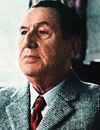 | Juan Domingo Perón
(1895-1974) | 12 October 1973
| 1 July 1974
| Sept.1973
| PJ
(FREJULI) | María Estela Martínez de Perón
|
| Elect in direct and democratic elections. He won with 62% of the votes 18 years after having been overthrown by a coup d’etat, with a ban on returning to the country and nearly two decades of governments and dictatorships that pursued Peronism and sought to “awaken” the population. He failed to pacify the conflicts between the Peronist Youth enrolada in Montoneros and the “orthodox” sectors of Peronism. He intervened several provinces linked to the Peronist left and openly faced Montoneros a few days before he died. It achieved a strong increase in real wages and in 1974 poverty fell to its historic minimum, reaching 4.6% of households. During his government, Minister José López Rega created the Argentine Anti-Communist Alliance (Triple A), a right-wing parastatal terrorist organization. He died in office.
|
| 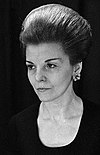 | María Estela Martínez de Perón
(1931-) | 29 June 1974 | 1 July 1974 | -
| PJ
(FREJULI) | She herself |
| Vice President Perón replaced him in office by seriously ill two days before he died.
|
| 1 July 1974
| 24 March 1976
| -
| PJ
(FREJULI) | Vacant |
| Vice President Perón assumed the presidency after his death. She was the first woman to occupy the executive branch throughout America. During his government, the power of Minister José López Rega, a member of the anti-communist secret lodge Propaganda Due and head of the terrorist organization Alianza Anticomunista Argentina (Triple A), which killed hundreds of people named "zurdas". The Montoneros and ERP guerrilla organizations openly confronted the government through armed actions, a context in which it issued the so-called annihilation decrees, which based on State terrorism. His Minister of Economy, Celestino Rodrigo, made the shock economics known as the "Rodrigazo", which began a stage of fifteen years of high inflation in Argentina, with annual rates above 100%. During its management, the Employment Contract Act was adopted, one of the most advanced in Latin America. It was overthrown by a coup that deepened the use of State terrorism.
|
|  | Italo Lúder
(1916-2008) | 13 September 1975 | 16 October 1975 | -
| PJ
| Vacant |
| Interim President of the Senate in exercise of the National Executive Branch, he was delegated provisionally for the president's health problems. During his administration, he signed some of the annihilation decrees.
|
The National Reorganization Process (1976-1983)
Main article: National Reorganization Process
Between the coup d'état of 1976 and the return of democracy in 1983, a last military dictatorship ruled in Argentina, self-styled National Reorganization Process, probably the best known due to its relatively recent nature and the number of disappeared by repression political and ideological that occurred, estimated at 30,000 disappeared, data provided by human rights organizations, such as the grandmothers of Plaza de Mayo (see: Disappeared by the Argentine dictatorship and State Terrorism in Argentina in the 1970s and 1980s).
Political level
As had been done during previous dictatorships, the dictatorship banned political parties and declared a state of siege. It was a regime of illegal repression, indiscriminate violence, persecution, systematized torture, forced disappearance of people, manipulation of information, and other forms of state terrorism.
Economic plan
Main article: Economy during Process
The dictatorship applied an economic plan that ended in failure, promoted by the then economy minister José Alfredo Martínez de Hoz. Its purpose was to stimulate foreign investment and eradicate inflation, which had reached a critical level in 1975.
A tariff reduction began that reached its maximum level in 1978, with the express purpose of increasing the competitiveness of the Argentine economy and promoting its natural advantages. The result was a process of massive imports and a disastrous effect on the industry. Large industrial companies closed their plants: General Motors, Peugeot, Citroën and Chrysler, Siam, Decca (Deutz-La Cantábrica), the utility vehicle plant of Fabricaciones Militares, Aceros Ohler, Tamet, Cura, Olivetti, and thousands of other industrial companies. medium and small. By 1980, industrial production had reduced its contribution to GDP by 10%, and in some branches, such as the until then widespread textile industry, the drop exceeded 15% (Gerchunoff,373).
Based on a labor policy that produced a profound reform of labor laws, the prohibition of strikes, the military intervention of the unions, and the repressive policy of state terrorism, Martínez de Hoz decreed the freezing of wages and contained the general discontent, before an unprecedented drop in the standard of living of the population. The real wage, from a base of 100 in 1970, had risen to 124 in 1975. In 1976, it fell sharply to 79, the lowest level since the 1930s (ILO 1988). Additionally, poverty ―which since the 1940s was always below 10%, and which dropped to 5.8% in 1974― rose to 12.8% (in 1980) and 37.4% poverty (in 1982).
In order to control the demand for foreign currency and maintain a policy of exchange rate arrears, at the end of 1978 Martínez de Hoz implemented a programmed devaluation system, nicknamed the Tablita. Together with Law 21,526 of Financial Entities ―promulgated in June 1977―, the little table promoted excessive financial speculation. The measure was taken to try to offset the losses caused to savers by the difference between the interest rate paid to time deposits and inflation; to protect financial institutions, the State became responsible for the payment of deposits. The cost of these measures, which caused the closure of more than 25 credit institutions, whose liabilities had to be assumed by the State, was enormous; it was also true for consumers, who had to face a liberalized credit market, whose rates increased in tandem with those paid for deposits. Mortgage loans reached an interest rate of 100% per year, which proved unaffordable for many debtors, and led a large part of the population to lose ownership of their homes.
The combined result of internal economic policies and the international financial situation of abundant capital looking for investment places, promoted a record level of indebtedness. The external debt rose from 7,875 million dollars at the end of 1975, to 45,087 million dollars at the end of 1983. The debt process essentially constituted a criminal operation carried out by national and foreign companies, the military, and economic agents, as verified in the important ruling of 196 pages issued on July 13, 2000 in the case "Alejandro Olmos c/ Martínez de Hoz et al. s/ Fraud" (Ext. 14467).

Monument in memory of the victims of State terrorism in the Parque de la Memoria de Buenos Aires.
State terrorism
Main article: State terrorism in Argentina in the 1970s and 1980s
During the National Reorganization Process, several thousand people were kidnapped, tortured, assassinated and made to disappear or forced into exile, as part of a repressive plan that was initiated by order of the constitutional president María Estela Martínez de Perón, with the order to annihilate the subversion.
During that time, 610 clandestine detention centers came into operation, among the best known the ESMA and the Olimpo, in the city of Buenos Aires, on Campito and Vesuvius, in the province of Buenos Aires, and La Perla, in Córdoba.
Most of the detained-disappeared were murdered and made to disappear in the so-called death flights, through which they were thrown into the sea alive and drugged, from military planes.
These actions of illegal repression constituted State Terrorism and left the Armed Forces (without constitutional support they were simple "armed bands") in a situation of illegitimacy and illegality similar to, or even worse than, the other irregular guerrilla forces that they were supposedly trying to combat.
Crimes against humanity committed during the National Reorganization Process were investigated in 1984 by the National Commission on the Disappearance of Persons (CONADEP) which produced the famous report "Nunca Más".
For these crimes against humanity, the three juntas of commanders that governed the country between 1976 and 1983 (the last one is excluded) were tried and sentenced in 1985. Other perpetrators have been tried and sentenced both in Argentina and in other countries. The processes have continued several decades after the events.
Presidents
| Portrait
| Name
(birth-death) | Lapso
| Election
| Party
| Vice-Chairman
|
|---|
|  | Military Government Board | 24 March 1976
| 29 March 1976
| -
| Military
| |
| Members: Jorge Rafael Videla, Emilio Eduardo Massera and Orlando Ramón Agosti.
|
 | Jorge Rafael Videla
(1925-2013) | 29 March 1976
| 29 March 1981
| -
| Military
| |
| Named as president by the Board of Commanders. He declared the state of siege and suspended the performance of political parties. It implemented a systematic policy of the use of State terrorism, which left a balance of thousands of disappeared, tortured and exiled persons, as well as hundreds of abducted children who were removed from their identity. It counted with the support of the United States that coordinated the Condor Plan and with that of the Soviet Union that blocked the sanctions requested in the United Nations. He appointed as Minister of Economics the businessman José Alfredo Martínez de Hoz, who implemented one of the first neoliberal plans in history, increasing inflation (tasas of more than 100 per cent per year), speculation and so-called "financial bicycle" and a regime of "peripheral deprivations" that gave rise to a series of private business groups that promoted corruption, known as "the homeland contractor". In its four years of government, external debt increased from $7495 million to $27,162 million, and the real wage dropped by 50%. During his government he was about to start a war with Chile, then under the Pinochet dictatorship, for the sovereignty of the Beagle Canal. During his government the Mothers of Plaza de Mayo and the Grandmothers of Plaza de Mayo emerged to claim for their missing children and grandchildren, the United States impulsed an investigation for massive human rights violations carried out by the IACHR, and Adolfo Pérez Esquivel, tortured by the dictatorship, received the Nobel Peace Prize for his struggle for human rights. Sentenced to life imprisonment for crimes against humanity.
|
 | Roberto Eduardo Viola
(1924-1994) | 29 March 1981
| 11 December 1981
| -
| Military
| |
| Following the completion of Videla ' s mandate on 29 March 1981, Viola was appointed by the Second Military Board. It continued with the policy of a State terrorist and the indebtedness of its predecessor. Inflation increased after abrupt devaluation. During his government, a sustained trend towards increasing poverty will be consolidated in the following decades. It was dismissed by the third Military Board because of its closeness to the Soviet Union and its dialogue with political parties to negotiate an electoral exit controlled by the military. Sentenced to 17 years in prison for crimes against humanity, he was pardoned in 1991.
|
 | Horacio Tomás Liendo
(1924-2007) | 21 November 1981 | 11 December 1981 | -
| Military
| |
| Appointed interim president by the board after Roberto Eduardo Viola is declared unable to exercise his functions as President of the Argentine Nation due to "health problems".
|
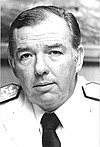 | Carlos Alberto Lacoste
(1929–2004) | 11 December 1981
| 22 December 1981
| -
| Military
| |
| He ruled internly for eleven days before the assumption of Leopoldo Galtieri. He had gained fame within the Army after being part of the World Autonomous Ente '78. Due to the brevity of his government there were no further reforms. He resigned on the same day that Galtieri swore on December 22, 1981.
|
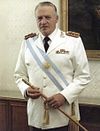 | Leopoldo Galtieri
(1926-2003) | 22 December 1981
| 18 June 1982
| -
| Military
| |
| Named by the Commanders' Board. It continued with the systematic policy of State terrorism implemented by the dictatorship. Unlike his predecessors he adopted a strong anti-Soviet position and narrow alignment with the United States in the Cold War. It restricted public spending, privatized state goods and froze wages, although the inflation rate exceeded 100 per cent per year during its management. It gave the order to occupy the Malvinas Islands, occupied by the United Kingdom, which led to the unleashing of the Malvinas War. The defeat in the war led to his resignation shortly after surrender. Sentenced to 12 years ' imprisonment for crimes committed during the Malvinas War, he was pardoned in 1991.
|
 | Alfredo Oscar Saint-Jean
(1926-1987) | 18 June 1982
| 1 July 1982
| -
| Military
| |
| He assumed provisionally after his predecessor ' s resignation, owing to the lack of consensus among the leadership of the Military Board on who to assume the post. He left the executive branch after the appointment of Reynaldo Bignone.
|
 | Reynaldo Bignone
(1928–2018) | 1 July 1982
| 10 December 1983
| -
| Military
| |
| It was the last dictator in Argentine history. As a result of the collapse of the dictatorship after the defeat in the Falklands War, it was the one who led the exit that culminated in the 1983 presidential elections. During his government he replaced the multidevalued weight-law by the Argentine peso. During his government the president of the Central Bank, Domingo Cavallo, statized private external debt. Shortly before he handed over power he gave a law of self-amnesty, forgiving crimes against humanity committed by the dictatorship and ordered the destruction of the documentation related to them. He was sentenced in six cases for crimes against humanity committed during the military dictatorship, the first one in 2010, to 25 years in prison and the following year to life imprisonment.
|
The Return of Democracy (1983-Present)
It is the democratic period that extends from the seizure of legislative and executive powers by democratically elected officials on December 10, 1983 to the present.
Political level
The institutions of the National Constitution remained in full force. Between 1987 and 1990 there were four military uprisings led by a group known as "carapintadas". In 1993, the two main parties in the country, the Justicialista Party and the Radical Civic Union reached an agreement to reform the Constitution, whose legitimacy was questioned because it had been established during a dictatorship, without complying with constitutional and democratic requirements. The constitutional reform came to fruition in 1994 and established, among other modifications, that the president and vice president would be elected by direct vote, through a double round system, reducing their mandate from six to four years, feasible for re-election. In the specific case of the acting president Carlos Menem, the Constitution established that the six-year term in force should be considered as a first term.
Socioeconomic level
Alfonsín's first steps as president were to appoint the new members of the Supreme Court and to order cases against the leaders of the ERP and Montoneros guerrilla organizations and the members of the three military juntas that have run the country since the civic coup -military from March 24, 1976 until the Malvinas war. He simultaneously created the National Commission on the Disappearance of Persons (CONADEP) with the mission of surveying, documenting and recording cases and evidence of human rights violations, to found the trial of the military juntas. During this period, the foundations of Mercosur were laid, which was officially created in 1991, during the Menem presidency.
The democratic period suffered, up to now, two major economic crises, the hyperinflation of 1989 and 1990 and the so-called crisis of 2001. Between 1989 and 2002, poverty increased considerably, as well as external debt and social instability. In 1989, inflation reached 3,079.5% per year, an all-time high. During both crises, looting took place.
President Menem carried out great transformations of the economic system and the State, through a policy of privatization of public services and pension funds, and a monetary system of free convertibility of the peso with the dollar. economy, but crime, unemployment and poverty also grew sharply. In 1998 another period of recession began, which would reach its climax during the De la Rúa government and would lead to the 2001 crisis.
During the governments of Néstor Kirchner and Cristina Fernández de Kirchner, the minimum wage, pensions and the middle class grew alongside important nationalizations such as the pension funds and the companies Aerolíneas Argentinas and YPF.
During the Macri government, a new crisis occurred, as a result of an accelerated indebtedness that led to a virtual default and a large devaluation, a record additional indebtedness with the International Monetary Fund and an inflation of 53% per year, which reached rates not recorded since 1990.
Presidents
| Portrait
| Name
(birth-death) | Lapso
| Election
| Party
(Alliance) | Vice-Chairman
|
|---|
|  | Raúl Alfonsín
(1927-2009) | 10 December 1983
| 8 July 1989
| 1983
| UCR
| Víctor Hipólito Martínez
|
| Elect in indirect and democratic elections. Created the National Commission on the Disappearance of Persons that produced the historic report Never again.. During his government, the Judgment was developed to the Boards, which condemned some of the first three members of the dictatorship. It promoted two laws of impunity, which prevented the prosecution of crimes against humanity committed during the dictatorship. During the repression under his command of the Co-upling of the La Tablada barracks by a guerrilla group, there were several disappearances of persons who were convicted by the Inter-American Court of Human Rights. The union law of the dictatorship, the violation of trade union freedom, and the intervention of trade union social works, remained in force and did not permit collective negotiations, maintaining a strong confrontation with the unions. He executed the Austral Plan and succeeded in sanctioning a law by moving the Federal Capital to Viedma, in Patagonia, which was ultimately not implemented. It achieved the sanction of divorce laws and shared parental authority. It proposed and prepared a draft constitutional reform. Shortly after the end of his government there was a "market coup" that unleashed a hyperinflationary crisis that led him to hand over power five months before the end of his term, to President-elect Carlos Menem.
|
|  | Carlos Menem
(1930–2021) | 8 July 1989
| 8 July 1995
| 1989
| PJ
(FREJUPO) | Eduardo Duhalde
8 July 1989 - 10 December 1991
(resigned) |
| Vacant |
| Elect in indirect and democratic elections. It pardoned persons convicted of crimes against humanity. The Supreme Court increased from five to nine members, appointing ten members who constituted an “automatic majority”. He decided without authorization from the Congress the participation of Argentina in the Gulf War. During his government, the terrorist attacks on the Israeli embassy and the AMIA, which caused 107 deaths and hundreds of injuries, were carried out by senior government officials covering the second attack. During his government, there were also explosions of the 1995 Third River that caused the deaths of seven people, with hundreds of wounded to cover up arms smuggling to Bosnia. Shortly assumed it implemented a policy of privatizations in line with the 1989 Washington Consensus, generated to guide the globalization that followed the defeat of the Soviet Union in the Cold War and subsequent disappearance. It drastically redrafted the railway network and eliminated the river and sea fleets. After suffering a second hyperinflation, he assumed the Ministry of Economy, Domingo Cavallo, former president of the Central Bank during the dictatorship, who established a new monetary system of free convertibility of weight with the dollar. Inflation was reduced to historical minimums that had not been recorded since the 1940s, but also strongly increased unregistered work, unemployment and criminality. It promulgated the 1994 Constitution that established the election of the presidential formula for direct suffrage, through a two-round system, reducing the presidential mandate from six to four years, with a single consecutive re-election. He was reelected in 1995.
|
| 8 July 1995
| 10 December 1999
| 1995
| PJ
(UCD) | Carlos Ruckauf
|
| Elect in direct and democratic elections. During his second term, he dismissed Minister Domingo Cavallo. In 1998, a four-year recession began, which increased poverty and unemployment and caused the emergence of the piquetero movement of unemployed.
|
|  | (Presidency)
Fernando de la Rúa
(1937–2019) | 10 December 1999
| 20 December 2001
| 1999
| UCR
(Alliance) | Carlos Álvarez
10 December 1999 - 6 October 2000
(resigned) |
| Vacant |
| Elect in direct and democratic elections. He assumed during the Argentine economic crisis (1998-2002), with the electoral promise not to leave the Menemist convertibility. Before one year he resigned Vice President Carlos "Chacho" Álvarez because of the denunciation of a serious act of corruption in the Senate to achieve the sanction of the law of labour flexibilization, politically and morally weakening the government. It adopted a policy of strong indebtedness ("Blindaje" and "Megacanje") and budgetary restriction (Zero Deficit Act), under the supervision of the International Monetary Fund. After the failure of several economic ministers he appointed Domingo Cavallo, who was the designer of Menem's economic policy. During his government the social situation deteriorated rapidly, the cuts of routes and streets grew by the piquetero movement of unemployed. The provinces, for their part, issued quasi-monhes to cancel their debts. The political weakness of De la Rúa was manifested in the 2001 legislative elections, where no candidate answered him. In the second semester of 2001, the IMF decided to stop the financial flow to Argentina, causing a financial crisis that the government sought to control by establishing “the corralito”, a ban on withdrawing funds from the banks that earned it a strong popular repudiation, which was expressed in attacks against banks driven by middle-class sectors. On December 19, 2001, a popular protest broke out under the motto "Let them all go." De la Rúa introduced the state of siege and its officials ordered severe police repression during which 39 people were killed. A few hours later he resigned.
|
| 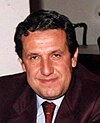 | Ramón Puerta
(1951–) | 20 December 2001
| 22 December 2001
| -
| PJ
| Vacant |
| Provisional President of the Senate in exercise of the National Executive, a position he held because Vice President Carlos Álvarez had resigned in 2000. According to the Acephaly Law, he called for a general assembly formed by the members of both chambers of Congress to appoint a president to complete the mandate of De la Rúa. His role ended after the appointment of Adolfo Rodríguez Saá.
|
|  | Adolfo Rodríguez Saá
(1947-) | 22 December 2001
| 30 December 2001
| -
| PJ
| Vacant |
| Acting President elected by Congress to complete the term of De la Rúa. It had only three days and had to resign from the lack of political support of governors and legislators. In that period he publicly declared the moratorium on external debt.
|
|  | Eduardo Camaño
(1946-) | 30 December 2001
| 2 January 2002
| -
| PJ
| Vacant |
| President of the Chamber of Deputies in exercise of the National Executive. His task was also to form an Assembly to appoint a president to complete the mandate of De la Rúa. Following the appointment of Eduardo Duhalde, his mandate was completed.
|
|  | Eduardo Duhalde
(1941-) | 2 January 2002
| 25 May 2003
| -
| PJ
| Vacant |
| Acting President elected by Congress to complete the term of De la Rúa. Supported by the multi-party and multi-sectoral consensus reached at the Bureau of the Argentine Dialogue, the first steps were to devalue the currency and put an end to convertibility. To combat poverty and record unemployment that led to the outbreak of convertibility, it created more than two million social plans called "Plan de Jefas y Jefes de Hogar". It provided the "asymmetrical weighing" of bank deposits in foreign currency, and established retentions for agricultural exports. His government was characterized by constant demonstrations of piqueteros and middle class sectors attacking banks. The murder of two social leaders, Máximo Kosteki and Darío Santillán by the Bonaerense Police, affected the legitimacy of the government and provoked the resignation of Duhalde, six months before completing its mandate.
|
| 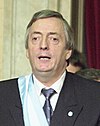 | Néstor Kirchner
(1950–2010) | 25 May 2003
| 10 December 2007
| 2003
| PJ
(FPV) | Daniel Scioli
|
| Elect in direct and democratic elections. Kirchner was one of the three Peronist candidates who presented themselves at the 2003 elections. As he was second in the first round, he acquired the right to dispute ballotage with former president Carlos Menem, who was the most voted candidate. But Menem, given the evidence of a crushing defeat, decided to withdraw his candidacy, making Kirchner president. Until 10 December 2003, he completed Fernando de la Rúa's mandate, which had been incomplete due to the resignation of Duhalde. From that day on, he began his constitutional period. In 2005 he made the exchange of debt with a considerable deletion, and at the end of that year the payment of all debt to the IMF using the Central Bank reserves, thus avoiding the conditionalities imposed by the international agency. During 2006 a diplomatic dispute arose with Uruguay from cellulose plants. During his government, the laws of impunity were declared null and unconstitutional and trials for crimes against humanity restated. The country reached the highest rates of growth in recent decades and created millions of jobs, thereby reducing unemployment and poverty. The government called collective negotiations annually for the first time in Argentine history. In the field of foreign policy, Argentina managed, in partnership with Brazil, Venezuela and other Latin American countries, to stop the implementation of the Free Trade Area of the Americas (ALCA), which constituted a strategic objective of the United States.
|
|  | (Presidency)
Cristina Fernández de Kirchner
(1953–) | 10 December 2007
| 10 December 2011
| 2007
| PJ
(FPV) | July Cobos
|
| Elect in direct and democratic elections. First elected woman for the office of President of the Republic. Shortly to assume he had to face an agricultural employer strike that kept the country's routes blocked for 102 days, in protest against a system of retentions to mobile exports, which had been designed by Minister Martin Lousteau. The government lost the conflict due to the vote of breaking against the vice president of radical extraction, Julio Cobos. The economic crisis in 2008-2009 was overcome by countercyclical policies, increasing public spending. This generated increases in inflation later years. It enacted a new Audiovisual Communication Services Act, replacing another one imposed by the dictatorship. It nationalized public retirement funds, privatized to be administered by AFJP during the Menem government. He launched the plan to connect equality, to reduce the digital social and geographical divide.
|
| 10 December 2011
| 9 December 2015
| 2011
| PJ
(FPV) | Beloved Boudou
|
| Elect in direct and democratic elections. He won re-election with 54% of the votes and more than 20 percentage points of difference with the opposition. He successfully pushed the Congress to vote for the purchase of 51% of the oil company YPF, which had been sold to the Spanish group Repsol during the government of Carlos Menem, and to approve a new Civil and Commercial Code for the country, as well as the laws of Equal Marriage and Gender Identity. During his government the Eleven railway accident occurred, leaving a balance of 52 dead and officials of his government with criminal sentences. It created the Universal Assignment by Son for unemployed or unregistered persons, which significantly reduced extreme poverty. It established the right to retirement of housewives. It promoted the adoption of the Statute for the Personnel of Particular Houses, improving their rights. Faced with so-called vulture funds, the United Nations was able to adopt the Basic Principles for the Restructuring of Sovereign Debts by a broad majority. His second economic government was characterized by stagnation of the economy and rising inflation rate. By judicial mandate, its mandate ended on 9 December 2015 at midnight, leaving the country in a state of acephalia.
|
|  | Federico Pinedo
(1955-) | 10 December 2015 | -
| PRO
(Let's change) | Vacant |
| Provisional President of the Senate in exercise of the National Executive for the application of the Acephalia Act. He presided over the country from 00:00 hours on 10 December to the swearing-in of Mauricio Macri at 11:15 hours on the same day.
|
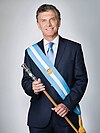 | (Presidency)
Mauritius Macri
(1959–) | 10 December 2015
| 10 December 2019
| 2015
| PRO
(Let's change) | Gabriela Michetti
|
| Elect in direct and democratic elections. First elected president in a balotage, defeating Daniel Scioli for two percentage points. Although his mandate, by a court decision, began on 10 December 2015 at 00:00 hs., it was only after he swore at the Congress at 11:45 hs. he took office as President. He applied a policy of high external indebtedness and price "sinceration" that significantly increased public services. By accelerating its mandate the country fell into default virtual by not being able to pay the contracted debt generating a strong devaluation. He resorted to a debt with the International Monetary Fund without a history background. The following year the country entered a new default. During his government, poverty and unemployment increased. During his government the ARA San Juan submarine was sank, causing the death of its 44 crew members, as a result of the negligence of senior officials of his government. He presented his candidacy for re-election, but lost in the first round for eight percentage points with Alberto Fernández, thus becoming the first Argentine president to lose a re-election.
|
|  | (Presidency)
Alberto Fernández
(1959–) | 10 December 2019
| Position | 2019
| PJ
(FDT) | Cristina Fernández de Kirchner
|
| Elect in direct and democratic elections. He took office on December 10, 2019.
|
Timeline since 1826
General Statistics
- From the whole list of rulers in Argentina, from 1776 to the present:
- Of the 12 virreyes, 2 died (Joaquín del Pino, Santiago de Liniers) in Argentina, one (Gabriel de Avilés and the Fierro) in Chile and the others in their native Spain. Gaspar de Vigodet was born and died in Spain.
- Without counting those viceroys, 19 rulers were de facto.
- Four died for natural cause in exercise of the post: Pedro de Melo, Manuel Quintana, Roque Sáenz Peña and Juan Domingo Perón.
- Eleven were overthrown: Juan Aguirre and López, Ildefonso Ramos Mexía, Manuel Dorrego, Juan Galo Lavalle, Juan Manuel de Rosas, Hipólito Yrigoyen, Ramón Castillo, Juan Domingo Perón, Arturo Frondizi, Arturo Umberto Illia and María Estela Martínez de Perón.
- Two women exercised the National Executive Branch, María Estela Martínez de Perón and Cristina Fernández de Kirchner.
- Only twenty completed the period for which they had been appointed, either after resignation, death or termination of the mandate of their predecessor: Juan José de Vértiz, Martín Rodríguez, Justo José de Urquiza, Bartolomé Mitre, Domingo Faustino Sarmiento, Nicolás Avellaneda, Julio Argentino Roca, Carlos Pellegrini, José Evaristo Uriburu, José Figueroa Alcorta, Victorino de la Plaza Although Raúl Alfonsín did not complete his mandate to advance the transfer of command five months earlier, he did hand over the command to an elected constitutional successor, without a case of internship or acephary. The president de facto Jorge Rafael Videla completed a five-year period for which he was appointed by the Non-Constitutional Military Board (29 March 1976 - 29 March 1981).
- The first woman president to be elected (and re-elected) for that office was Cristina Fernández de Kirchner—María Estela Martínez de Perón had previously been vice president.
- The shortest period of government was that of Federico Pinedo with only 12 hours for a judgment of justice, until the swearing of the president-elect Mauricio Macri between 00:00 and 12:15 on December 10, 2015.
- The president who reached the greatest longevity was Roberto Marcelo Levingston (from 1970-1971) who died in 2015 at the age of 95.
- The president who had the most time of post-presidence is María Estela Martínez de Perón, still alive 47 years, 1 month and 11 days after her overthrow on March 24, 1976. Second is Levingston, who died on 17 June 2015, who left power on 22 March 1971, 44 years, 2 months and 26 days before his death, and thirdly is Bartolomé Mitre, who died on 19 January 1906, 37 years, 3 months and 7 days after completing his term as president, which ended on 12 October 1868.
- The youngest president at the time of assuming was Nicolás Avellaneda, 37 years old and 11 days old.
- With the Royal Audience or the Cabildos ruling, the executive power was in the hands of a board of directors and not in a single position.
- The oldest president at the time of assuming was Juan Domingo Perón, in 1973, on the occasion of his third term, at the age of 78.
Más resultados...


















































































































